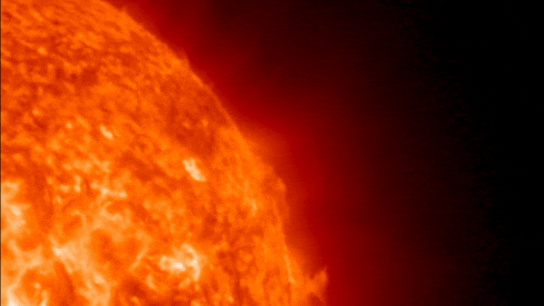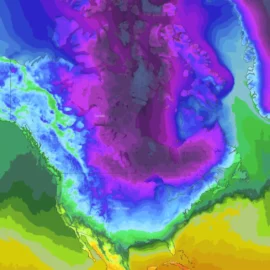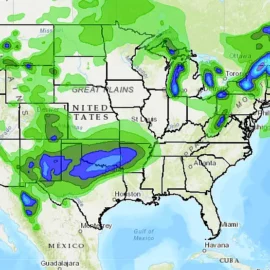
Sun Enters Solar Maximum Phase - What This Means for Earth
On October 15, 2024, NASA and the National Oceanic and Atmospheric Administration (NOAA) officially announced that our Sun has entered the solar maximum phase of Solar Cycle 25. This significant event is noteworthy for both scientists and the general public, as it heralds a period of heightened solar activity that is expected to continue into 2025. The solar maximum is part of a roughly 11-year cycle during which the Sun experiences fluctuations in its magnetic activity, leading to varying levels of sunspot formation and solar phenomena.
Understanding the Solar Cycle
The dynamics of solar activity are primarily driven by the Sun's magnetic field, which undergoes a complete reversal approximately every 11 years. Each solar cycle comprises three distinct phases: the solar minimum, the solar maximum, and the declining phase. During the solar minimum, the Sun is relatively calm and features a significantly lower number of sunspots, which are dark, cooler areas on the Sun's surface associated with magnetic activity. As the cycle approaches the solar maximum, the number of sunspots increases dramatically, indicating a period of heightened solar activity.
For centuries, sunspots have been meticulously observed and documented. The first known observations date back to the early 17th century, credited to the Italian astronomer Galileo Galilei. These observations laid the groundwork for our understanding of solar cycles, allowing scientists to track their periodic variations. Solar Cycle 25, which began in December 2019, has already shown a slightly higher level of sunspot activity than initially anticipated, prompting interest from the solar physics community.
Solar Maximum Phase
The solar maximum is characterized by an increase in sunspots, solar flares, and coronal mass ejections (CMEs). According to Elsayed Talaat, the director of space weather operations at NOAA, the official entry into this phase does not necessarily equate to the peak of solar activity. It may take several months or even years for scientists to pinpoint the actual peak, as definitive confirmation of this status typically follows a consistent decline in solar activity.
The current solar maximum phase of Solar Cycle 25 is expected to last approximately another year before transitioning into a declining phase that ultimately leads back to a solar minimum. Throughout this transitional period, scientists anticipate seeing a variety of solar phenomena, including but not limited to geomagnetic storms, which can disrupt satellite communications and GPS systems.
Observations and Expectations
During the past two years, the Sun has displayed a sustained high level of sunspot activity. While some significant solar storms have been observed since the beginning of this cycle, none have surpassed the expected norms for a solar maximum phase as of now. Notably, the strongest solar flare of this cycle occurred on October 3, 2024, classified as an X9.0 flare. Solar flares are categorized on a scale that ranges from A (the lowest) to X (the highest), with explosive power increasing significantly with the letter designation.
Scientists utilize various instruments, including satellites and ground-based observatories, to monitor solar activity. Tools like the Solar Dynamics Observatory (SDO) play a crucial role in capturing high-resolution images of solar phenomena, enabling researchers to study the intricate behavior of the Sun's atmosphere and magnetic fields. Additionally, organizations such as the Space Weather Prediction Center (SWPC) closely monitor sunspots and solar events to provide timely alerts about potential space weather impacts.
Implications for Earth
The implications of the solar maximum phase extend beyond scientific interest; they include notable technological impacts on Earth. Geomagnetic storms that occur as a result of solar activity can disrupt power grids, affect satellite operations, and interfere with radio communications. During periods of high solar activity, operators of technology-heavy infrastructure must remain vigilant to mitigate potential disruptions caused by solar events.
Yet, the solar maximum phase also offers unique opportunities for the public to witness stunning natural phenomena, such as auroras. These mesmerizing displays occur when charged particles from solar storms interact with the Earth's atmosphere near the polar regions, resulting in vivid light shows. For many, these auroras provide a captivating spectacle as well as an appreciation for the complex interactions between solar activity and terrestrial effects.
The official announcement of the Sun entering the solar maximum phase for Solar Cycle 25 marks an exciting chapter in solar science. As scientists continue to closely monitor solar activity, they will be better equipped to understand the range of phenomena that accompany this phase, from sunspots to solar flares and geomagnetic storms. While the potential technological impacts of heightened solar activity warrant careful consideration, the wonder of auroras and other astrophysical events adds a layer of fascination to our understanding of the Sun's behavior. As we move forward during this active period, both researchers and skywatchers alike stand to gain valuable insights into the Sun's captivating role in our solar system.
Founder and chief forecaster of the Pogodnik service. He has many years of experience in the meteorological service. He is the author of numerous scientific publications and popular articles about the weather.




